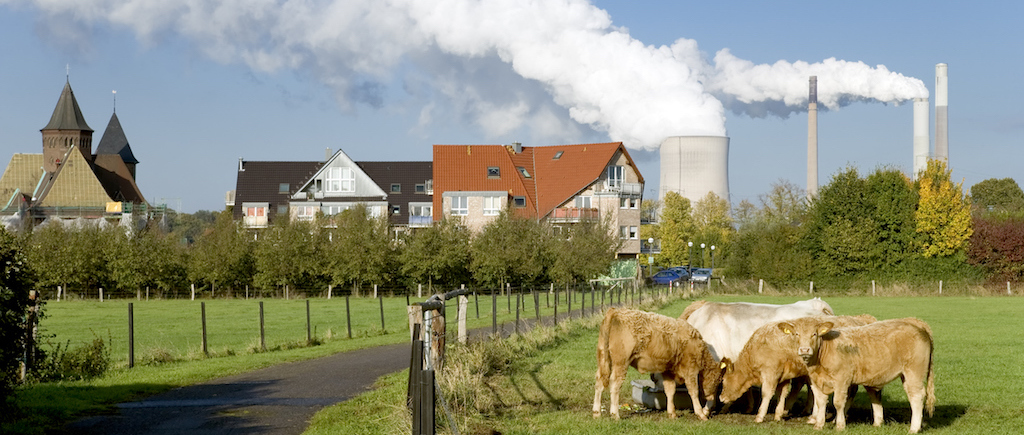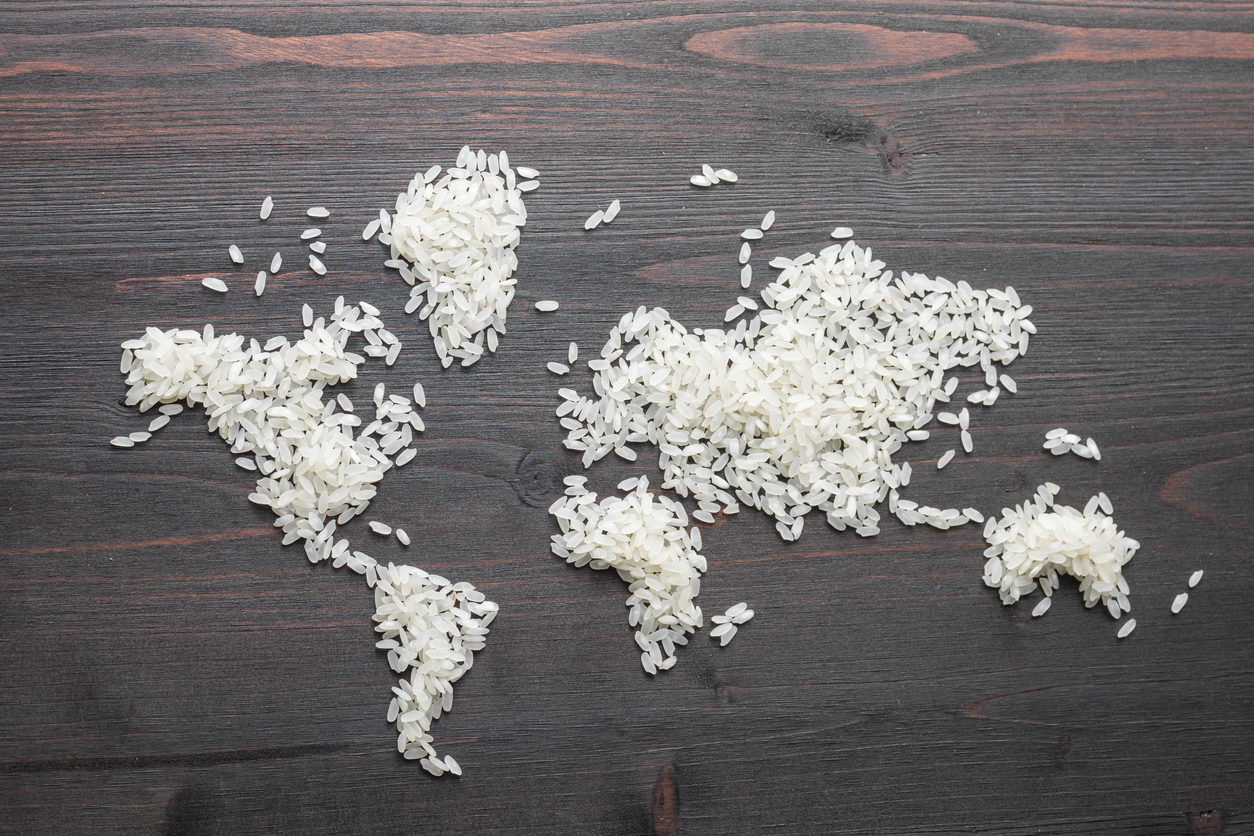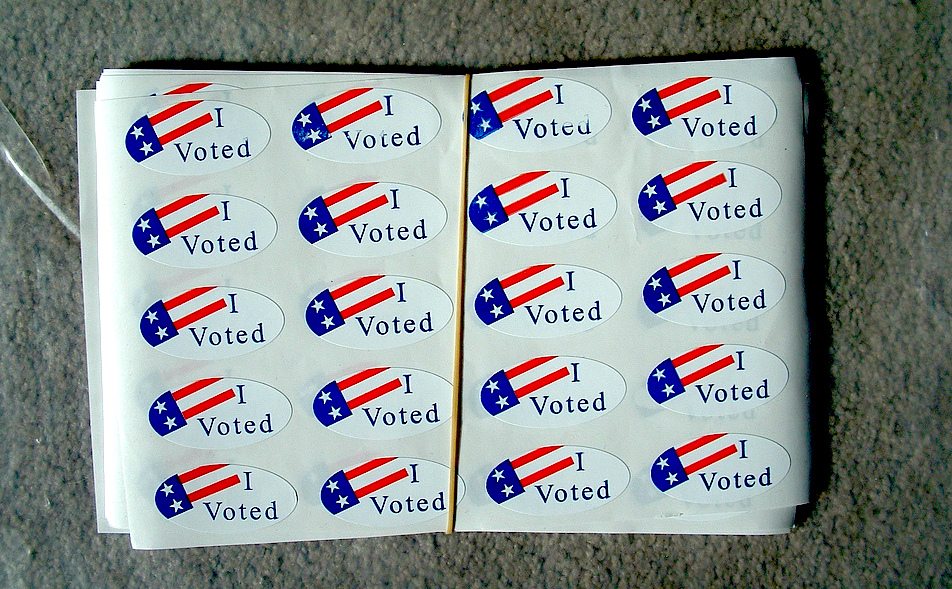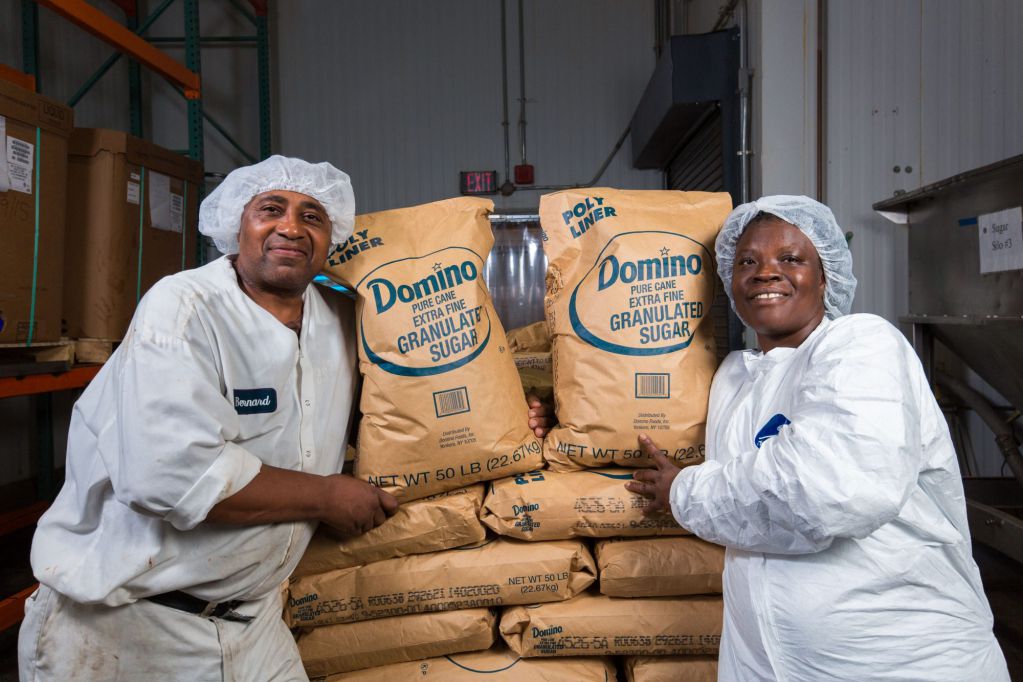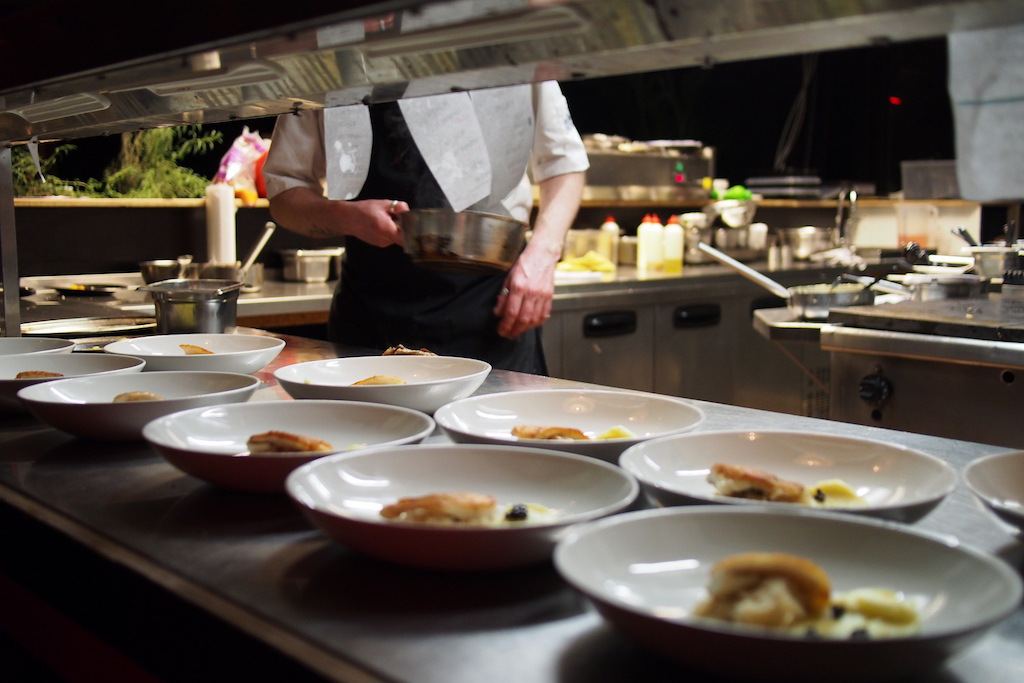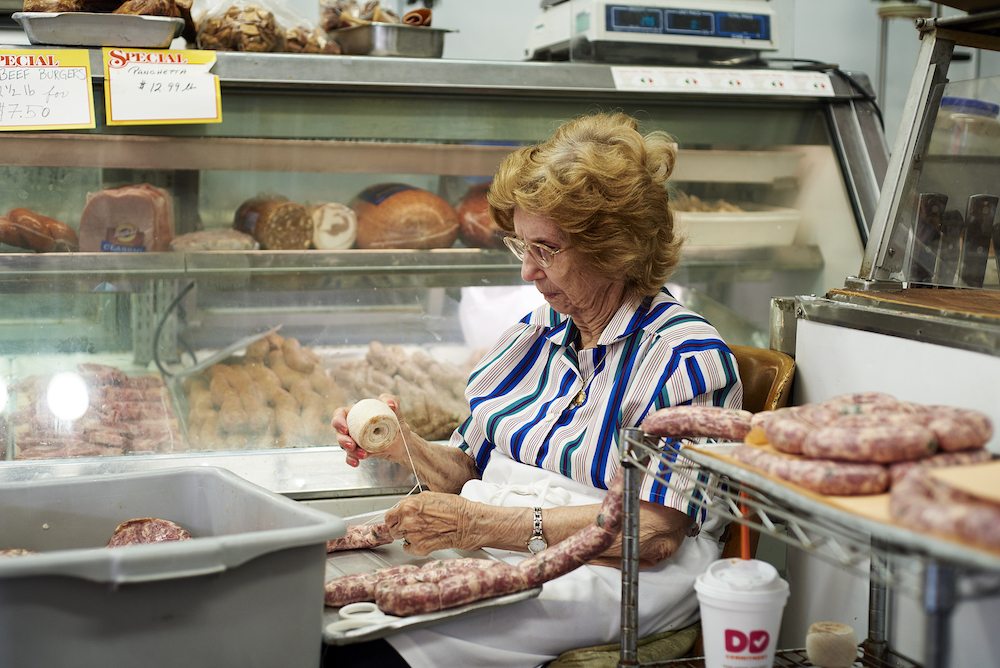
Albert Yee
For more than one hundred years, a half-mile stretch of South Philadelphia has been devoted to food. It was there in the late 1800s, when an open-air market first rose up around the boarding houses and tenements that took in Irish, Jewish, and Lebanese newcomers. It was there at the turn of the century, as the Italian community strengthened around the city’s first Italian-Catholic Church. And it’s there today, in all its chaotic glory, sandwiched in between two quickly gentrifying neighborhoods.
Locals call it the “Italian Market,” but the South 9th Street Market is richer and more complex than that. In the span of a single block, you can step from Palermo to Puebla to Saigon. Where the shoppers bustle, in the shade of metal shop awnings and fabric canopies, vendors sell tamarind, star fruit, and seven-fish sausage. You can find sugarcane, honeycomb tripe, python filets, whole buckets of tomatoes. Segway tours glide by stalls that accept food stamps. It’s a slice of the old country, a business incubator, a tourist trap that remains grounded. At a fruit stand on 9th and Washington, an on-duty cop—officer Juan “Ace” Delgado of the 3rd Precinct—advises a customer that she should buy the passion fruit.
 Albert Yee
Albert Yee Bee Tranh inherited his curbstand license from a neighbor-turned-employer
The shopkeepers may peddle flavors from all across the globe, but the micro-economy they sustain is distinctly Philadelphian. And yet South 9th is more than the sum of its old-world food knowledge—it’s a recipe for how to save a city.
The Italian Market was conjured out of Philadelphia’s hardscrabble history. Economic hardship is, in a way, what enabled it to be. And the thrifty, low-overhead business models immigrants developed by necessity helped to create a self-sustaining ecosystem that’s endured for more than a century.
 Albert Yee
Albert Yee Philadelphia’s curbstand license program is 100 years old this year
The market also mirrors the condition of the city. In the 1960s and 70s, when population declined and concern about crime increased, when the ice house closed down, and the slaughterhouses left, when the brickyard disappeared, and housing projects rose up, some stalwarts weathered the storm and others left storefronts to fall into disrepair. The curbstands developed a reputation as nests for trash, as hiding spots for muggers, as buffets for the rats that swarmed through the abandoned buildings.
And yet, for some, the market’s disrepair signaled an opportunity.
According to South 9th old-timers, Korean immigrants showed up in the 1980s with suitcases of cash. They rented and bought derelict buildings, wrestling them back into shape. They turned on the lights and picked up the trash. By merely occupying the storefronts, they fought the blight. Vietnamese, Mexican, and Cambodian entrepreneurs followed suit.
Judy Tran and her husband Scott emigrated from Cambodia and opened a grocery store and curbstand on South 9th in October of 1990. “It was too cold,” Judy tells me. “October, September, November, December, no customers. All the way to April, it was too cold and nobody knew us. I was so worried.”
 Albert Yee
Albert Yee Offerings at the Italian Market include python filets and honeycomb tripe
“The city grows through businesses that don’t,” says Kushanava Choudhury, a political scientist and sociologist that led a University of Pennsylvania research project into South 9th.
The project revealed that, like the Trans, most new 9th Street businesses avoided small business loans, and only 12 percent got their startup capital from banks—whereas 57 percent tapped personal savings and 31 percent hit up family and friends. Loans are often unnecessary; the average startup cost for a curbstand is about $3,000; a brick-and- mortar Mexican goods store can get underway with $15,000. In the end, according to a 2015 study conducted by the Fiscal Policy Institute, immigrant entrepreneurs break even and pay themselves $36,000. In other words, the immigrant business owners revitalizing the city have done so for a laborer’s wage.
In immigrant communities, entrepreneurship is often an economic necessity. That’s because, for many, professional-sector employment can be out of reach. Immigrants may have little education or have completed an educations in their home countries that don’t serve them in America. They may be undocumented. English is a notoriously difficult language to master. The available jobs are often low paid, and can be plagued by wage theft and insecurity.
Starting a business, in comparison, can seem like a good bet: Find a cheap place, fix it up, employ yourself, stock with the intimate knowledge of what your community wants and do not take on debt. For newly-minted Philadelphians, South 9th Street has been a good place to begin.
 Albert Yee
Albert Yee The average startup cost for a curbstand is about $3,000
Tranh found just such a neighbor in Dominick Mancuso. Being neighborly, Tranh helped Mancuso sweep the sidewalk and take out the trash, and before long Mancuso, who was getting on in years and had little family left in the area, offered Tranh a job helping him run his vegetable curbstand on South 9th.
Five years into Tranh’s tenure at the stand, Mancuso became too ill to work. “I took care of him,” Tranh says. “Like family.”
 Albert Yee
Albert Yee Overlooking the market is a mural of Frank Rizzo, who served as Philadelphia’s police commissioner (1968-1971) and mayor (1982-1980). A controversial local figure, Rizzo was a champion for law and order—or a racist thug, depending on who you ask
Before Mancuso died, he gave the curbstand license to Tranh, free and clear. This is not an unusual arrangement at the market, where licenses are handed down like heirlooms from father to daughter, mother to son, master to apprentice.
As long as Tranh kept up the $300 monthly fee, he’d have a place of business.
After some customers clear away, Tranh and I cross South 9th to talk in front of the Mexican Pasteleria where he keeps a little office. I ask him whether the business is profitable. Before he answers, a man carrying a watermelon walks up and puts a few folded dollars in his hand. “I took this before,” the man says.
“Okay. Take it easy,” Tranh says.
“Be good,” says the customer.
“Profit?” Tranh muses, turning back to me. “Always profit. From the beginning.”
I clarify: net profit. “Do have you extra money after costs, after paying yourself and your wife?”
He shrugs. “Maybe in 1995,” he says. He adds that his house is paid off and each of his four kids went to college. “My daughter’s working in city hall,” he says.
Whether or not the customer base has shrunk since 1995 (and other curbstand owners I spoke to suggest it hasn’t) Tranh’s response is indicative of the larger truth: Success on South 9th means stability, not profit.
 Albert Yee
Albert Yee Francisco Rivera Herrera owns Tortilleria San Roman, the first tortilleria in Philadelphia
“My father ran a tortilleria, and I thought my path would be different, but here I am,” Rivera Herrera says, minding the machine. It’s a long, silver contraption with a large feeding funnel for the dough, mechanized roller for cutting, and a conveyor belt oven. Rivera Herrera is a thin man with a wispy salt and pepper beard. He’s deliberate in movement and speech. From the conveyor, he gathers the corn flour discs into stacks, wraps them in paper, and bags them.
After a childhood helping his father, Rivera Herrera worked in a keg factory for beer titan Grupo Modelo in Tlaxcala, a small, central Mexican state near the capital. There he learned to weld. He traveled north and found work as a drywall hanger, or sheetroquero, in Baltimore and Philadelphia. Once he showed his boss he could weld, his earnings jumped, and after four years of saving his wages, he began to think of business opportunities. Rivera Herrera attended a workshop at United Communities of Southeast Philadelphia, an outreach center on 8th and Snyder that emerged from the 19th Century Settlement House movement. “There, for the first time, I saw a branch one could follow,” Rivera Herrera says. The workshop showed him how he could manage a business without a social security number or credit history.
In 2009, he sunk his savings into leasing a South 9th storefront and filling it with equipment, opening Tortilleria San Roman, the first tortilleria in Philadelphia.
 Albert Yee
Albert Yee Herrera saved for four years before opening his tortilleria in 2009
In skipping the curbstand for a storefront, Rivera Herrera took a risk. At a curbstand the costs are low, the grounds for competition are level and the path to success is clear. Keep an attractive stand, offer a fresh product at a good price and you can stay in business forever. In contrast, Rivera Herrera’s path is uncharted.
And he faces a more intense battery of regulations. It took him and his son, whom he calls his “right arm,” a year and a half to hack their way through the alien-English of American legalese before they had their business privilege license, weights and measures inspection, alarm registration, health department inspection and more in order.
By measure of popularity, Tortilleria San Roman is a huge success. It’s a five-star rating on Yelp with 173 reviews. While I sit by the counter, interviewing Rivera Herrera, he politely attends a constant stream of customers, all of them beaming, actually smiling with anticipation as they buy his salsas, cremas and tortillas. There’s no tip jar, but one woman refuses her change, insisting he keep it. Despite the foot traffic and good will, though, the overhead of raw ingredients, utilities, rent and three employees is a lot to swallow.
“After all of that, profits are minimal,” he tells me. “You work a lot, you sell a lot, and you pay a lot.”
Rivera Herrera has clientele, a rep, and has avoided the millstone of a small business loan, yet he remains cautious.
“I guess I better adapt, because now I’m in the middle of all of this,” he says, looking around to his fridges, cases, dough and more. He smiles. “If it doesn’t work, perhaps my old boss will take me back as a welder.”
 Albert Yee
Albert Yee Antoinette Crimi was born a few years after her family’s shop opened, and she began cutting meat as soon as she could hold a kitchen knife
A story commonly peddled about Philadelphia’s renaissance—demonstrated by 2010’s uptick in population, the first city’s first since 1950—is that professionals were returning to their parents’ city for jobs in healthcare, higher ed, and tech. (See here and here.) But that narrative overlooks the city’s vibrant immigrant communities, which deserve a great deal of the credit, by having opened and kept businesses where no one else could.
If you took immigrants out of the 2010 census (the most recent conducted), Philadelphia would have continued its loss of residents. “Outside of a few neighborhoods, the ‘Meds and Eds model’ is simply not true,” Choudhury says, as we walk down South 9th’s lane of hand trucks stacked with fruit crates. “The real story is what’s happening here. The Italian Market is a microcosm of the city.”
The Fiscal Policy Institute Study reported that, from 2000 to 2013, immigrants started 96% of the newly opened storefront businesses in Philadelphia’s commercial corridors. In other words, Philly’s population growth isn’t about the yuppies coming home. It’s about the foreign-born newcomers who find a way to make ends meet, and stay.
 Albert Yee
Albert Yee Dominick Crimi, Antoinette Crimi’s son, now runs the store
It all started years ago, when a fruit vendor’s daughter from Palermo and a butcher’s apprentice from Messina met, married, and in 1920, opened Cappuccio’s Meats. Their daughter, Antoinette, born a few years after the store opened, began cutting meat from the day she could hold a kitchen knife. (When the folks weren’t watching, she’d grab a cleaver.) In the evenings, Antoinette would come down to the darkened store from the family’s upstairs apartment and sit by the window, peering through the hanging sausages and pig halves.
 Albert Yee
Albert Yee Dominick Crimi trims a cut of meat
“I couldn’t wait for the next day to start,” Antoinette tells me. ”I always loved the business.”
Cappuccio’s persists, operating on a century’s worth of know-how, and Antoinette still works. Surrounded by the knives, bright lights and white tile, she greets customers, minds recipes, and ties off Sicilian sausage. Aside from adding online orders, the business is largely the same.
“You’re not getting rich down here,” says Dominick, Antoinette’s son, who now runs the store. “But it’s stable.”

